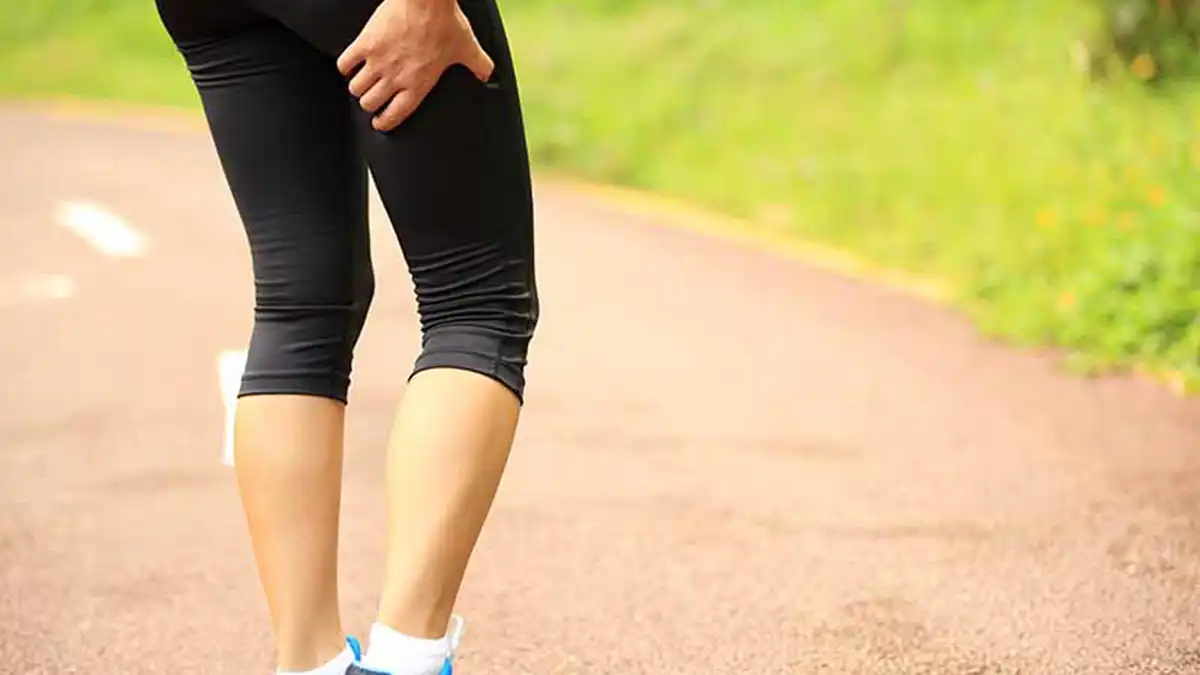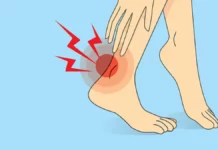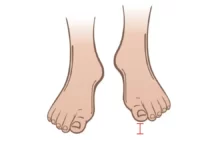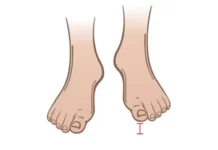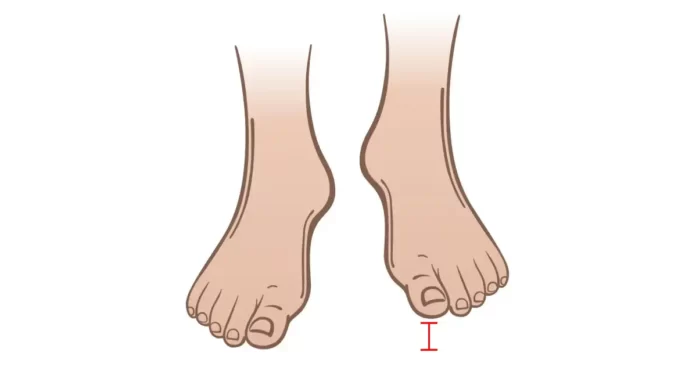Let’s decipher the complex world of hamstring injuries, where resilience and recovery combine in the face of physical challenges.
Anatomy and Function of the Hamstrings
Anatomy
The hamstrings are a group of muscles located at the back of the thigh. They include three main muscles: the biceps femoris, the semimembranosus and the semitendinosus. These muscles attach to the pelvic bone (ischion) and travel down the thigh to attach to the tibia and fibula.
- Biceps Femoris: It is composed of two heads, long and short, which share a common tendon at the lower end of the thigh.
- Semi-membranous: Located medially, it attaches to the ischium and extends downward to attach to the tibia.
- Semitendinosus: Positioned just adjacent to the semimembranosus, it also shares its origin at the ischium and ends on the tibia.
Function
The hamstrings play a crucial role in several functions related to mobility and stability of the pelvis, knee and hip.
- Knee Flexion: The hamstrings are responsible for knee flexion, that is, bending the knee to bring the leg closer to the thigh.
- Hip Extension: When the hip is flexed, the hamstrings participate in its extension, bringing the thigh to a straight position.
- Hip Rotation: Certain hamstrings contribute to hip rotation, which is especially important during walking and other movements.
- Pelvic Stabilization: The hamstrings contribute to pelvic stability by working in conjunction with other muscle groups.
- Posture Control: These muscles are essential for maintaining a balanced posture and promoting core stability.
Athletic Importance
In the sporting context, strong and flexible hamstrings are crucial to avoiding injuries, particularly muscle strains and strains. A targeted hamstring stretching and strengthening program is often incorporated into athletes’ training to improve performance and reduce the risk of muscle injuries.
By understanding the anatomy and function of the hamstrings, it becomes possible to design specific exercise programs aimed at optimizing their strength, flexibility and coordination, thereby contributing to overall body mobility and stability.

Common Causes of Hamstring Injuries
Common Causes of Hamstring Injuries
Hamstring injuries are quite common, especially among athletes involved in activities that require a high demand on these muscles, such as running, soccer, rugby, and other similar sports. Several factors can contribute to these injuries, and they can be classified into different categories. Here are some of the common causes:
- Lack of adequate warm-up: Insufficient warm-up before strenuous physical activity can increase the risk of hamstring injury. The muscles must be prepared and softened to avoid excessive tension.
- Low muscle flexibility: Inflexible hamstring muscles can be more prone to injury. Regular stretching and improving flexibility can help prevent injuries.
- Muscle Imbalances: An imbalance between opposing muscles (quadriceps and hamstrings) can create uneven stress on the knee joints, increasing the risk of injury.
- Muscle Fatigue: Hamstring fatigue from overuse or intense training can increase the risk of injury. It is essential to allow adequate recovery between training sessions.
- Improper Training Technique: Using incorrect training technique, such as lifting too heavy without proper form, can put excessive strain on the hamstrings.
- Overuse: Excessive use of the hamstring muscles without an adequate recovery period can lead to injury. This may be related to excessive training volume, repeated sprints, or other activities that intensively use these muscles.
- Uneven terrain: Playing sports on uneven or slippery surfaces can increase the risk of hamstring injuries.
- Insufficient warm-up: A lack of warm-up before strenuous physical activity can increase the risk of hamstring injury. Unprepared muscles may be more prone to strain or tear.
- History of Previous Injuries: People with previous hamstring injuries have an increased risk of recurrence, especially if the previous injury has not been completely healed.
It is important to emphasize that preventing hamstring injuries often involves a holistic approach, including proper warm-up, balanced muscle strengthening, flexibility, proper training technique, and adequate cool-down. Individuals participating in athletic activities should consult health care professionals or coaches to design training programs tailored to their specific needs.

Symptoms
Symptoms of a hamstring injury can vary depending on the severity of the injury. Here are some common symptoms associated with a hamstring injury:
- Pain: Pain is the most common symptom. It can vary in intensity, from mild discomfort to sharp pain. The pain is usually felt in the back of the thigh, where the hamstrings are located.
- Tenderness to touch: The area around the hamstrings may be tender to touch, and direct pressure on the injured area may intensify the pain.
- Swelling: In cases of more serious injuries, swelling may occur. This can result from inflammation of damaged tissues.
- Muscle stiffness: Muscle stiffness may develop, limiting the range of motion of the affected leg.
- Muscle weakness: The hamstring injury can lead to muscle weakness in the affected leg, which can make it difficult to perform normal activities, including walking.
- Bruising: In some cases, bruising may develop around the affected area. This may be a sign of a more serious muscle rupture.
- Loss of flexibility: A hamstring injury can cause a loss of flexibility in the leg, making it difficult to fully stretch the muscles.
- Snapping or tearing sensation: Some individuals may describe a snapping or tearing sensation at the time of injury, indicating a possible muscle tear.
Pathophysiology of hamstring injury
- Initial Trauma: Hamstring injury usually occurs as a result of initial trauma, such as overstretching or a sudden, forceful muscle contraction. This can occur during sporting activities, sudden movements or muscle imbalance.
- Muscle Tear: The initial trauma can lead to tearing of the hamstring muscle fibers. The severity of the tear can vary, from a simple muscle strain to a partial or complete tear of the fibers.
- Inflammatory Response: Immediately after the tear, the body initiates an inflammatory response to help manage the damage and initiate the healing process. This results in increased blood flow to the affected area, which can cause symptoms such as pain, swelling and warmth.
- Hematoma Formation: In response to the tear, a hematoma (collection of blood) may form in the injured area. This can contribute to pain and swelling.
- Cell Proliferation: Cells responsible for tissue repair, such as fibroblasts, begin to proliferate in the injured area to replace the damaged tissue.
- Scar Formation: Over time, fibroblasts synthesize collagen to form a scar in the area of the tear. This scar helps reconnect torn muscle fibers and restore stability.
- Rehabilitation and Rehabilitation: As the scar forms, rehabilitation becomes crucial. Rehabilitation exercises, such as stretching and strengthening exercises, are often recommended to restore normal muscle function, prevent stiffness, and reduce the risk of recurring injuries.
Tear type

Grade 1 (Mild): In grade 1 injuries, only a few fibers of the muscle are damaged or rupture. Fortunately, this rarely has a significant impact on the muscle’s power and endurance. Symptoms, such as pain and tenderness, tend to appear the day after the injury, varying from person to person. Patients usually report stiffness on the posterior side of the leg, although they can walk normally. Although some slight swelling may occur, the knee generally retains its normal flexion capacity.
Grade 2 (Moderate): Grade 2 indicates a more substantial tear, affecting approximately half of the muscle fibers. This results in a partial tear of the muscle, leading to reduced muscle strength and flexibility. The pain becomes more immediate and intense compared to a grade 1 strain. Stretching and contracting the muscle is particularly painful, and the affected area is tender to touch. Bend the knee against resistance, and persistent pain can make it difficult to fully extend the knee.
Grade 3 (Severe): Grade 3 represents a serious injury, with more than half of the muscle fibers ruptured, up to complete muscle rupture. At this point, both the muscle and tendon may be torn, causing significant swelling and severe pain. Normal function of the hamstring muscle becomes impossible, marking great weakness in the affected area. Recovery will require a more intensive approach and a prolonged rehabilitation period to restore muscle strength and normal function.
Hamstring Injury Prevention
Preventing hamstring injuries involves a holistic approach that combines muscle strengthening, flexibility, proper warm-up and training load management. Here are some preventative strategies and exercises that can help reduce the risk of hamstring injuries:
- Dynamic warm-up: Before any intense physical activity, a dynamic warm-up is essential. It should include movements that increase body temperature, improve blood circulation and specifically prepare the hamstrings. Exercises such as lunges, leg swings, and rotating movements may be beneficial.
- Static Stretching: Although the appropriateness of static stretching before exercise is debated, regular stretching outside of workouts can help maintain hamstring flexibility. Stretches like the hamstring stretch can be included in the stretching routine.
- Muscle Strengthening: A balanced muscle strengthening program is crucial. This should include exercises targeting the hamstrings, but also surrounding muscles such as the quads and glutes. Exercises such as hamstring curls, squats, lunges and hip lift exercises can be included.
- Eccentric exercises: Eccentric exercises, where the muscle contracts while lengthening, can help strengthen the hamstrings in specific ways. An example is the “Nordic hamstring curl”.
- Balance work: Improving balance can help prevent injuries by strengthening the stabilizing muscles around the hamstrings. Single-leg exercises, such as single-leg squats, may be included.
- Training load management: Avoid overuse by moderating training frequency, intensity and duration. Be sure to allow adequate recovery between workouts.
- Correcting muscle imbalances: If muscle imbalances are identified, working to correct them can help reduce stress on the hamstrings. Specific exercises may be prescribed based on individual needs.
- Maintaining Good Posture: Good body posture during exercise and daily activities can help reduce strain on the hamstrings.
- Injury Rehabilitation: For those who have previously suffered hamstring injuries, a rehabilitation program supervised by medical professionals can help gradually strengthen the muscles and prevent recurrence.
Impact of Hamstring Injuries on Sports Performance
Hamstring injuries can have a significant impact on athletic performance, both immediately and in the long term. The influence of these injuries depends on the severity of the injury, the responsiveness of the treatment and the quality of the rehabilitation. Here is an analysis of the main impacts on sports performance and the return to competition process:
- Immediate Decrease in Performance: A hamstring injury can cause an immediate decrease in athletic performance. The hamstrings are crucial for movements such as running, jumping and changing direction. A reduction in strength or the ability to generate power can lead to decreased performance in sporting activities that rely heavily on these movements.
- Impaired mobility and balance: Hamstring injuries can lead to loss of mobility and balance, which can affect movement technique and coordination. This can negatively influence performance, especially in sports that require high precision and agility.
- Psychological impact: Hamstring injuries can have a significant psychological impact, causing stress, anxiety and even frustration in athletes. Fear of recurrence can also affect self-confidence, which can impair performance, even after returning to competition.
- Return to Competition Process: The return to competition process after a hamstring injury should be gradual and well managed. It usually involves steps such as reducing pain, restoring mobility, strengthening muscles, reintegrating specific sports activities and managing training load. A premature or poorly managed return can increase the risk of recurrence.
- Risk of recurrence: Athletes who have suffered a hamstring injury have an increased risk of recurrence, even after a successful return to competition. It is crucial to implement long-term prevention strategies to minimize this risk, such as specific training programs, correction of muscular imbalances and appropriate training load management.
- Training Adaptations: After a hamstring injury, it may be necessary to make training adaptations to minimize stress on this area while still maintaining overall fitness. This may include changes in exercises, training frequency and intensity.
- Ongoing Medical Monitoring: Athletes who have suffered hamstring injuries may require ongoing medical monitoring to ensure that rehabilitation is complete and that signs of overuse or emerging muscle imbalances are detected and treated early.
Stretching and Strengthening Techniques
Maintaining hamstring health requires a combination of stretching and strengthening techniques. These approaches aim to improve flexibility, strengthen the hamstring muscles and prevent muscle imbalances. Here are specific tips for hamstring stretching and strengthening techniques:
Stretching Techniques
- Static Stretches: Static stretches are helpful in improving hamstring flexibility. Perform static stretches after warming up or at the end of the workout. For example, sit with your legs stretched out in front of you and gently lean forward, trying to touch your toes.
- Dynamic stretches: Dynamic stretches are beneficial during warm-up. Perform leg swings before exercise to increase blood flow and prepare the hamstrings for the movements ahead.
- Stretches with a resistance band: Use a resistance band for controlled stretches. Secure the band around one foot and stretch the leg forward and to the side, maintaining constant tension on the hamstrings.
- PNF (Proprioceptive Neuromuscular Facilitation) Stretches: PNF stretches involve a combination of muscle contraction and relaxation to improve flexibility. These stretches are often done with a partner.
Strengthening Techniques
- Hamstring Curls: Hamstring curls, whether done on the machine or with floor exercises like the Swiss Ball Hamstring Curl, specifically target the hamstrings. Be sure to perform these exercises with good form to avoid excess strain on the knees.
- Squats: Squats work the muscles of your lower body, including the hamstrings. Make sure to maintain good form with your back straight and your knees aligned above your ankles.
- Deadlifts: Deadlifts strengthen the hamstrings, glutes and lower back muscles. Use proper technique to avoid undue stress on the spine.
- Hip Lift Exercises: Exercises such as bridges and hip thrusts strengthen the gluteal and hamstring muscles. They also improve core stability.
- Eccentric Exercises: Incorporate eccentric exercises, such as the Nordic Hamstring Curl, to strengthen the hamstrings specifically.
- Yoga and Pilates: These disciplines often include exercises that target the hamstrings while improving flexibility and stability.
General Tips
- Gradual Progression: Gradually increase the intensity of your stretches and strengthening exercises to avoid injury.
- Muscle Balance: Make sure you work all the muscles in your lower body equally to avoid muscle imbalances.
- Consistency: Incorporate stretching and strengthening exercises into your workout routine on a regular basis for lasting results.
- Listen to Your Body: Pay attention to your body and adjust your training program based on fatigue, pain or any signs of overuse.
Before adopting a new stretching or strengthening program, it is recommended to consult a healthcare professional or fitness trainer to ensure that the exercises are suitable for your specific physical condition and needs.
Famous Cases of Hamstring Injuries
Many top athletes have dealt with hamstring injuries during their careers. These notable cases offer important lessons about the importance of prevention, rehabilitation and training load management. Here are some examples :
- Lionel Messi: Argentine footballer Lionel Messi has suffered several hamstring injuries throughout his career. These injuries sometimes kept him off the field during critical periods. Lessons learned from his case include the importance of training load management, the need for thorough rehabilitation and attention to injury prevention, especially given the demanding nature of elite football .
- Cristiano Ronaldo: Another renowned footballer, Cristiano Ronaldo, has also faced hamstring injuries throughout his career. His ability to maintain a high level of performance despite these injuries highlights the importance of quality rehabilitation and constant attention to physical fitness to minimize risk.
- Usain Bolt: Jamaican sprinter Usain Bolt has experienced hamstring injuries throughout his career, most notably during his last competitive season in 2017. His case highlights the need to take the necessary recovery time after an injury and not to rush the return to competition, even for high-level athletes.
- Kevin Durant: Basketball player Kevin Durant suffered an Achilles tendon injury in 2019, but he is also known to have had hamstring issues during his career. His case highlights the importance of injury prevention, particularly for professional athletes who experience intense training and competition loads.
- Daniel Sturridge: England football striker Daniel Sturridge has had a series of hamstring injuries throughout his career. His case highlights the potentially debilitating impact of these injuries and the importance of taking preventative measures, including training load management and muscle strengthening.
Lessons Learned:
- Training Load Management: Athletes should carefully monitor their training load to avoid overuse of the hamstrings, particularly during intensive periods of training and competition.
- Complete Rehabilitation: Athletes should pay special attention to rehabilitation after a hamstring injury, ensuring that they return to the field only when healing is complete.
- Injury Prevention: Preventative measures, such as proper warm-up programs, specific strengthening exercises, and correcting muscle imbalances, can help reduce the risk of hamstring injuries.
- Individualization of Treatment: Each athlete reacts differently to injuries, so rehabilitation and prevention protocols must be tailored on an individualized basis.
- Long-Term Considerations: Athletes should consider the long-term management of their muscular health, with a focus on injury prevention to prolong their athletic career.
These cases highlight the critical importance of a holistic approach to muscle health, ranging from prevention to rehabilitation, for athletes of all levels.
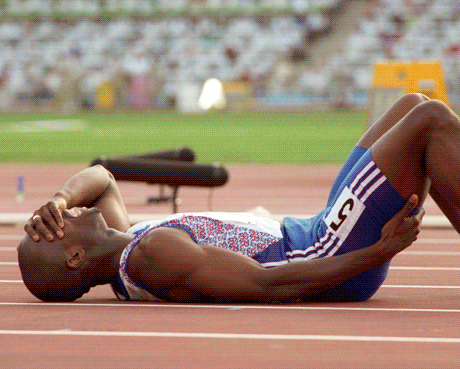
Preventing hamstring injuries often involves proper warm-up programs, muscle-strengthening exercises, balanced training, fatigue management, and careful attention to technique when exercising or playing sports.
Preventing a hamstring injury
- Proper Warm-Up: Before any strenuous physical activity, make sure you do a proper warm-up. Dynamic stretches and specific movements can help prepare the hamstring muscles for exercise.
- Muscle Strengthening: Incorporate muscle strengthening exercises into your training program, with an emphasis on the hamstring muscles. Exercises such as hamstring curls, deadlifts, and lunges can be beneficial.
- Regular Stretching: Working on hamstring flexibility can help prevent injuries. Static, dynamic stretches and yoga exercises can be helpful.
- Balanced Workout: Make sure you have a balanced training program that takes into account all muscle groups. An imbalance between antagonist muscles can increase the risk of injury.
- Proper Training Technique: Be sure to use correct technique when performing exercises, especially those that involve the hamstring muscles. A qualified trainer can help you correct your technique if necessary.
- Avoid Muscle Fatigue: Avoid pushing your muscles beyond their limits, especially when you are tired. Muscle fatigue increases the risk of injury.
- Weight Management: Maintain a healthy body weight to reduce the strain on muscles and joints. Excess weight can increase stress on the hamstrings.
- Hydration and Nutrition: Make sure to stay hydrated and maintain a balanced diet to promote good muscle health.
- Posterior Warm-Up: In addition to a general warm-up, focus on specifically warming up the hamstring muscles before strenuous activity.
- Gradual Progression: Avoid sudden changes in the intensity or duration of your training program. Progressing gradually allows your muscles to adapt gradually.
Conclusion
In conclusion, hamstring injuries are common, especially among athletes, and can have a significant impact on athletic performance. Famous athletes such as Lionel Messi, Cristiano Ronaldo, Usain Bolt, Kevin Durant, and Daniel Sturridge have all experienced challenges related to hamstring injuries during their careers, highlighting the importance of proactive health management muscular.
Hamstring injury prevention relies on a holistic approach, combining proper warm-up techniques, muscle strengthening exercises, targeted stretching and careful training load management. Lessons learned from these notable cases highlight the importance of comprehensive rehabilitation, consideration of long-term management of muscle health, and individualization of training and prevention programs.
When experiencing a hamstring injury, it is crucial to consult a healthcare professional for an accurate diagnosis and proper treatment plan. Understanding the symptoms, severity of the injury and implementing preventative measures can help minimize risks and promote optimal recovery. Vigilance, consistency in muscle care and continuous adaptation of training practices are essential elements in maintaining hamstring health and optimizing athletic performance.
References
- Davis KW. Imaging of the hamstrings. Semin Musculoskelet Radiol. 2008 Mar;12(1):28-41. [PubMed]
- Petersen J, Hölmich P. Evidence based prevention of hamstring injuries in sport. Br J Sports Med. 2005 Jun;39(6):319-23. [PMC free article] [PubMed]
- Woods C, Hawkins RD, Maltby S, Hulse M, Thomas A, Hodson A., Football Association Medical Research Programme. The Football Association Medical Research Programme: an audit of injuries in professional football–analysis of hamstring injuries. Br J Sports Med. 2004 Feb;38(1):36-41. [PMC free article] [PubMed]
- Kuske B, Hamilton DF, Pattle SB, Simpson AH. Patterns of Hamstring Muscle Tears in the General Population: A Systematic Review. PLoS One. 2016;11(5):e0152855. [PMC free article] [PubMed]
- Prior M, Guerin M, Grimmer K. An evidence-based approach to hamstring strain injury: a systematic review of the literature. Sports Health. 2009 Mar;1(2):154-64. [PMC free article] [PubMed]
- Freckleton G, Pizzari T. Risk factors for hamstring muscle strain injury in sport: a systematic review and meta-analysis. Br J Sports Med. 2013 Apr;47(6):351-8. [PubMed]
- Tokutake G, Kuramochi R, Murata Y, Enoki S, Koto Y, Shimizu T. The Risk Factors of Hamstring Strain Injury Induced by High-Speed Running. J Sports Sci Med. 2018 Dec;17(4):650-655. [PMC free article] [PubMed]
- Fousekis K, Tsepis E, Poulmedis P, Athanasopoulos S, Vagenas G. Intrinsic risk factors of non-contact quadriceps and hamstring strains in soccer: a prospective study of 100 professional players. Br J Sports Med. 2011 Jul;45(9):709-14. [PubMed]
- Elliott MC, Zarins B, Powell JW, Kenyon CD. Hamstring muscle strains in professional football players: a 10-year review. Am J Sports Med. 2011 Apr;39(4):843-50. [PubMed]
- Askling CM, Tengvar M, Saartok T, Thorstensson A. Proximal hamstring strains of stretching type in different sports: injury situations, clinical and magnetic resonance imaging characteristics, and return to sport. Am J Sports Med. 2008 Sep;36(9):1799-804. [PubMed]
- Ekstrand J, Waldén M, Hägglund M. Hamstring injuries have increased by 4% annually in men’s professional football, since 2001: a 13-year longitudinal analysis of the UEFA Elite Club injury study. Br J Sports Med. 2016 Jun;50(12):731-7. [PubMed]
- Valle X, Malliaropoulos N, Parraga Botero JD, Bikos G, Pruna R, Monaco M, Maffulli N. Hamstring and other thigh injuries in children and young athletes. Scand J Med Sports Sci. 2018 Dec;28(12):2630-2637. [ PubMed _
- Ali K, Leland JM. Hamstring strains and tears in the athlete. Clin Sports Med. 2012 Apr;31(2):263-72. [PubMed]
- Alzahrani MM, Aldebeyan S, Abduljabbar F, Martineau PA. Hamstring Injuries in Athletes: Diagnosis and Treatment. JBJS Rev. 2015 Jun 30;3(6) [PubMed]
- Credit in part: Bikash Poudel; Shivlal Pandey.

